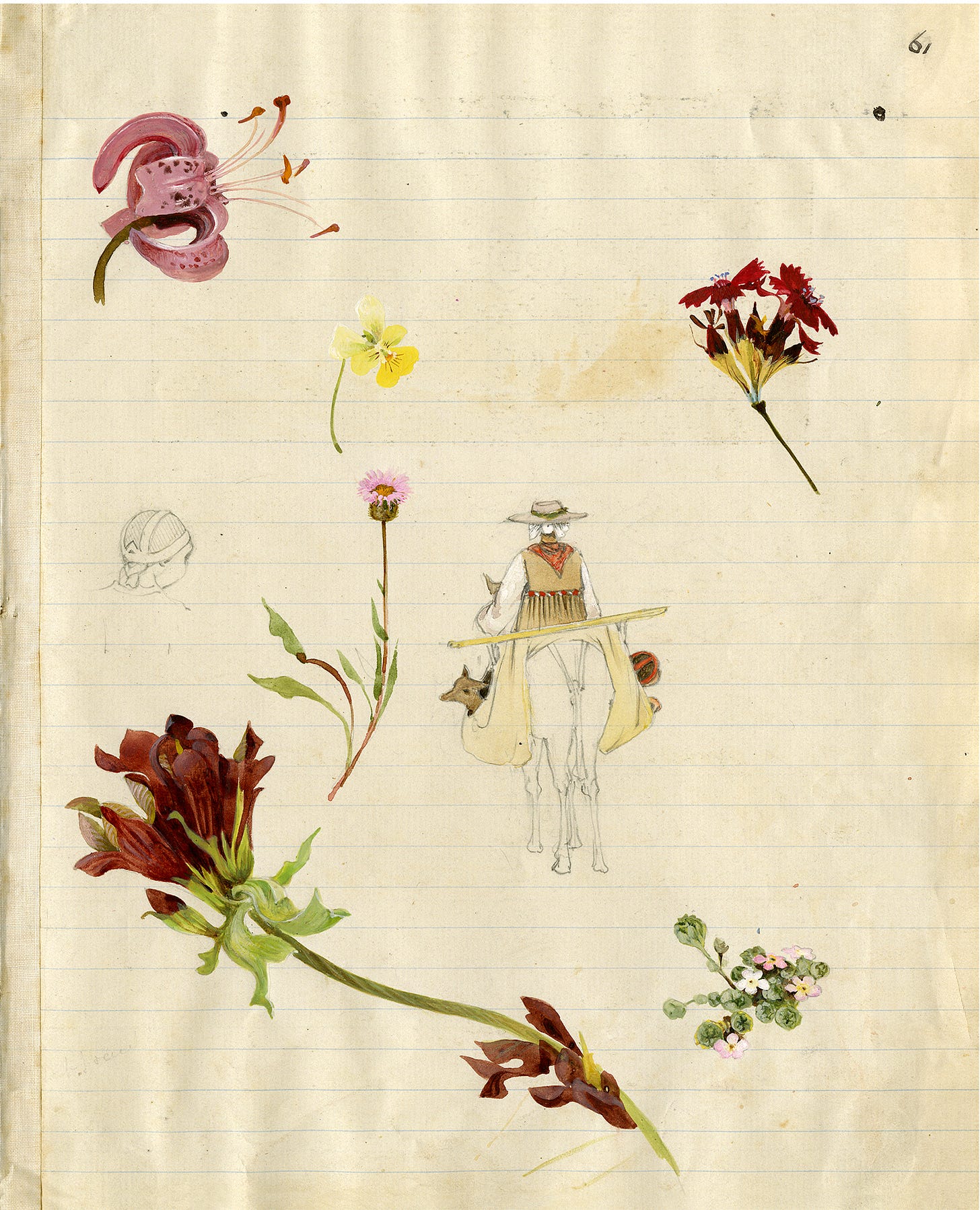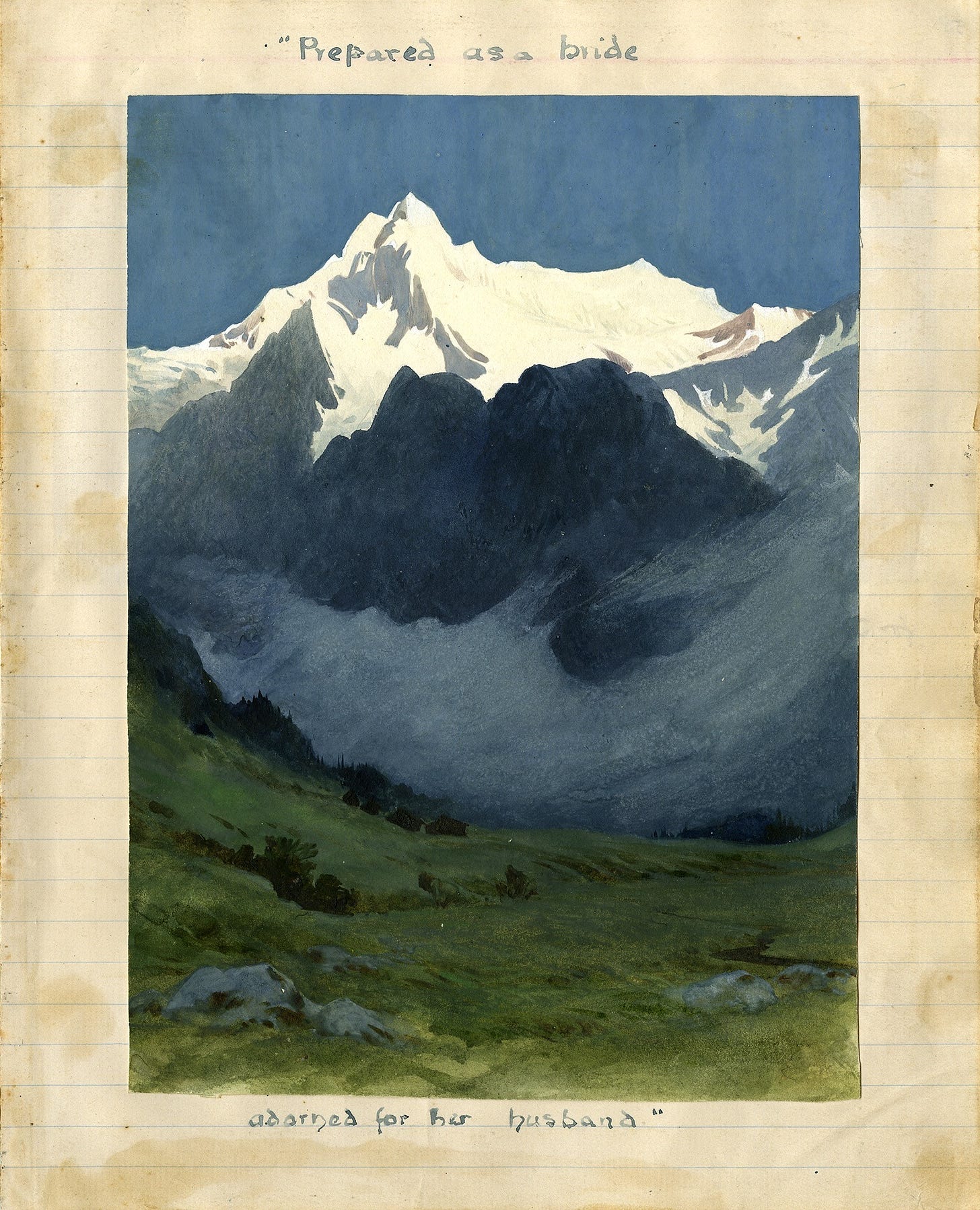A Drawing of Lilias
*…is this thing on? tap. tap. tasting chicken. tasssting chicken. toasting peppers. ssssibilance. six slippery snakes. testing, one, two, three.
Ahem. Hello, friends 👋 Thanks for reading this first entry in A Beautiful World, my little bi-weekly newsletter planned for 2025.
I thought I’d start by sharing the drawing I made above with you (✔️) and talking a little bit about my process:
This is a graphite drawing on Stonehenge Legion paper (250gsm), made with my usual combination of mechanical and wood pencils ranging from 4H to 2B, but was a bit different from my other drawings in that I ended up using some white lead to add back in some halftones after a near-derailment of value-planning while initially toning the paper. Toning was done with graphite powder and a Kleenex. This can be a huge time saver on long drawings, but requires a bit of tight-rope walking during the initial block-in, as erasing is kept to a minimum by necessity.
The drawing took around 10 hours in total, from reference prep, to hand-toning the paper, blocking-in, and making the finished drawing. Mistakes were made and lessons were learned! By no means is this an academic drawing in terms the quality of execution, but I was aiming for an illustrative look that conveys at least a little of my subject’s character, and for that I think it worked out fairly well. (✔️)
*Feel free to download the above image to use it as a screensaver this week if you like it (and let me know if the resolution is is too low! I’d like to be able to offer hi-res images for you in the future, so I’ll find a way to get it worked out ☺️).
Who Was Lilias Trotter?
I recently discovered the story of Lilias Trotter, thanks in large part to Russ Ramsey’s book, Rembrandt Is In The Wind. She was an artist and Christian missionary who was once nearly forgotten to history, but has since found a degree of admiration among those who know her for the story of her life and sacrifice.
She was a woman of immense talent, recognized in her time as a brilliant artist. John Ruskin, one of the most influential art critics of the Victorian era, believed she had the potential to become one of the greatest painters of her generation, which included contemporaries like Vincent Van Gogh, Claude Monet, Paul Cézanne, and James McNeill Whistler.
Ruskin’s mentorship offered Trotter as clear a path to success as any artist could hope. No doubt she would have had access to some of the best training available while supported in the nurturing of her talents.
However, Ruskin wasn’t to accept a divided focus. This was probably wisely so, as the expedient mastery of any given craft often requires acute dedication and focus, to the exclusion of much else. When Trotter realized the time spent in her humanitarian efforts—such as establishing literacy and education programs and providing healthcare for marginalized women and children—were viewed as a threat to the development of her artistic talents, she was faced with a choice.
Instead of pursuing a career that would have brought her fame and recognition, she ultimately turned down Ruskin and followed her calling to serve God – which for her was as a missionary in Algeria.
For us, this means that an entire lifetime of paintings or drawings—many of which might have become enduring masterpieces—was never created. The extant body of Trotter’s work is relatively small: a handful of watercolors, sketches, and studies in her sketchbooks, along with some writings and illustrated tracts.
If you are an artist reading this, you probably feel the profound weight of self-sacrifice in this choice. As artists, writers, musicians, and creators we live and breathe our work, a central thread to our existence, the sustenance of our being. For many of us, it is the reason we get up in the morning, and for some of us it’s the only thing keeping the darkness and despair at bay.
In my experience, creative living is a manifestation the artist’s deepest and truest self. The nurturing of this self requires a level intentionality which can be a sacrifice in itself. Time to engage with our artistic gifts must be set aside each day to the exclusion of a myriad other activities (hello, Elden Ring), to practice, to self-mastery (without which not much art gets done), and in learning how to do daily battle with the terrifying blank page. This intention must be carved from each day, often on-top of day jobs, family-life, or other responsibilities. It’s sacred, so deep is this thing at the core of ourselves– and that is why to imagine willfully closing a door to the nurturing of this God-given gift would seem tantamount to ripping oneself in two. Why would Lilias choose to do so? Wasn’t art her calling in the first place?
Seen on this side of eternity, from our limited, veiled perspective, it seems Ms. Trotter’s decision was a kind of epic martyrdom– a choice made by someone so deeply in tune with God that she was willing to surrender her most cherished earthly desire.
Personally? I just think Lilias was just smart. She understood the upside-down nature of our Creator’s values as compared to the world’s. I don’t think she would have considered herself much of a martyr at all, understanding that she had everything to gain by simply being obedient to God, who values obedience as much as, if not more than, sacrifice (1 Samuel 15:22).
In her writings, Trotter compares the Christian life to a dandelion standing “full face to the sun,” absorbing and reflecting its light. This vivid metaphor speaks directly to the artist’s heart. The dandelion’s brilliance comes not from striving but from its orientation—its focus. Trotter understood that focus is not a matter of narrowing one’s life into drudgery or monotony but of finding clarity and depth. She wrote, “Gathered-up, focussed lives, intent on one aim—Christ—these are the lives on which God can concentrate blessedness.”
This focus, however, requires discipline. It means letting go of distractions and side interests, even good ones, if they dilute our purpose. As Trotter puts it, “The good hiding the best” is often more insidious than outright frivolity. For artists, this might mean creating not for trends but for truth, allowing our work to be an offering, a reflection of God’s glory rather than a bid for fleeting recognition.

Trotter’s life might seem narrow in contrast to the boundless opportunities she left behind. Yet she would argue that this narrowing is, in fact, the path to true freedom. “Narrow as Christ’s life was narrow,” she writes, “this is our aim; narrow as regards self-seeking, broad as the love of God to all around.” The higher the path climbs, the narrower it becomes—but the air grows purer, and the view expands.
Trotter never stopped making art. She took her sketchbooks and watercolors with her into lands faraway from her home and comforts, maintaining a drawing and sketching practice for the rest of her life that honored and reveled in the beauty of other cultures, flora, and fauna – work that almost no one would see. To be able to engage in the beauty of God’s creation around her, while honoring Him in her creative work, was enough.
While the world may have missed out on many works and masterpieces by Trotter that might have been, it’s also true that we didn’t end up with none of her work. And those small paintings and sketches are likely to be forever accompanied with the story of her sacrifice and love for her fellow man. Which is more powerful in this case? The pretty picture, or the beautiful life?
As artists, we often fear that focusing on God might limit our creativity or success. But in reality, the opposite is true. The more our lives are rooted in Christ, the more our work will carry the weight of authenticity and the light of eternal significance. Our art, like the dandelion, will catch and reflect a glory far beyond our own making.
“Again, the kingdom of heaven is like a merchant seeking fine pearls,
And upon finding on pearl of great value, he went and sold all that he had and bought it.”
–Matthew 13:44-46 (NASB)
On A Personal Note
These concepts were already weighing heavily on my mind prior to reading about Lilias’ story in November of this year. I’d had a bit of an earth-shaking 2023 which involved, among other things, the indefinite hiatus of my band, which had been my main creative project for decades. It was a tumultuous year in which I suffered a loss of identity accompanied by a lot of confusion. By the time I began recovering from it in early 2024, I knew I needed to stop and reconsider where my artistic energies were going. At 44 years old, 6 years sober, little to show for a proper “career”, and a small family waiting in the wings, it was clear to me that any needless spinning of my wheels was a luxury I couldn’t much afford. So for the first time in many years, I took time off creatively, read a lot of books (admittedly mostly for pleasure), and prayed for direction.
I realize that a few of you (particularly friends or fans of my art from Instagram who’ve kindly followed me here and subscribed to my newsletter) might be reeling a bit by my explicit mentions of Christ, the scriptures, and my faith in God, and you’d not be faulted at all for your surprise 😅. Religion is one of those things that’s easier to talk about with the religious, but I’ve never been all interested in that, either. In any case, if the faith part of my art + faith newsletter feels a bit too uncomfortable for you, I understand if this is where we part ways.
Having said that, this won’t be a place for apologies for it, either. It’s terrifying to be vulnerable. I’d much rather stay in my comfortable guise of unassailable social-media perfection, but I know I can’t be all things to all people and be truly genuine. And but so that’s why I created this newsletter. At the very least, I’m trying to learn about myself and share what I’ve learned with you. My hope is that one person finds it encouraging or inspiring. To me, for now, that’s enough. ☺️
A couple of last housekeeping notes:
One thing I hope to do here is foster community, so I’d encourage you to ask questions if you have them, send me tips and suggestions for this newsletter, or just say hello - I don’t have a firm plan for where this will go, and I’d love to learn from you, too. I’d like to hear whether the process stuff is interesting or not. Is it boring? Less essay, more technique and process? Book club, anyone?
Never fear! I don’t expect these newsletters to be quite so long in the future! I am experimenting with learning to write, but I certainly don’t want to rob myself of the little time I have for drawing and painting. None of these things are my day job. I’ll write from time, of course, but I also just want to share with you my daily drawing practice, whether through Notes or newsletter posts.
I get asked quite frequently if my work is for sale on Instagram, but have always said no. However, I think I will try opening up sales of certain works to my Substack subscribers from time to time. If interested, my drawing of Lilias Trotter above can be purchased for 180$ USD + $20 materials & shipping. In the future, I may try raffles for paid subscribers to win a drawing. We’ll see!
Thanks for being here and Happy New Year to you and yours! 🐊 🥳






